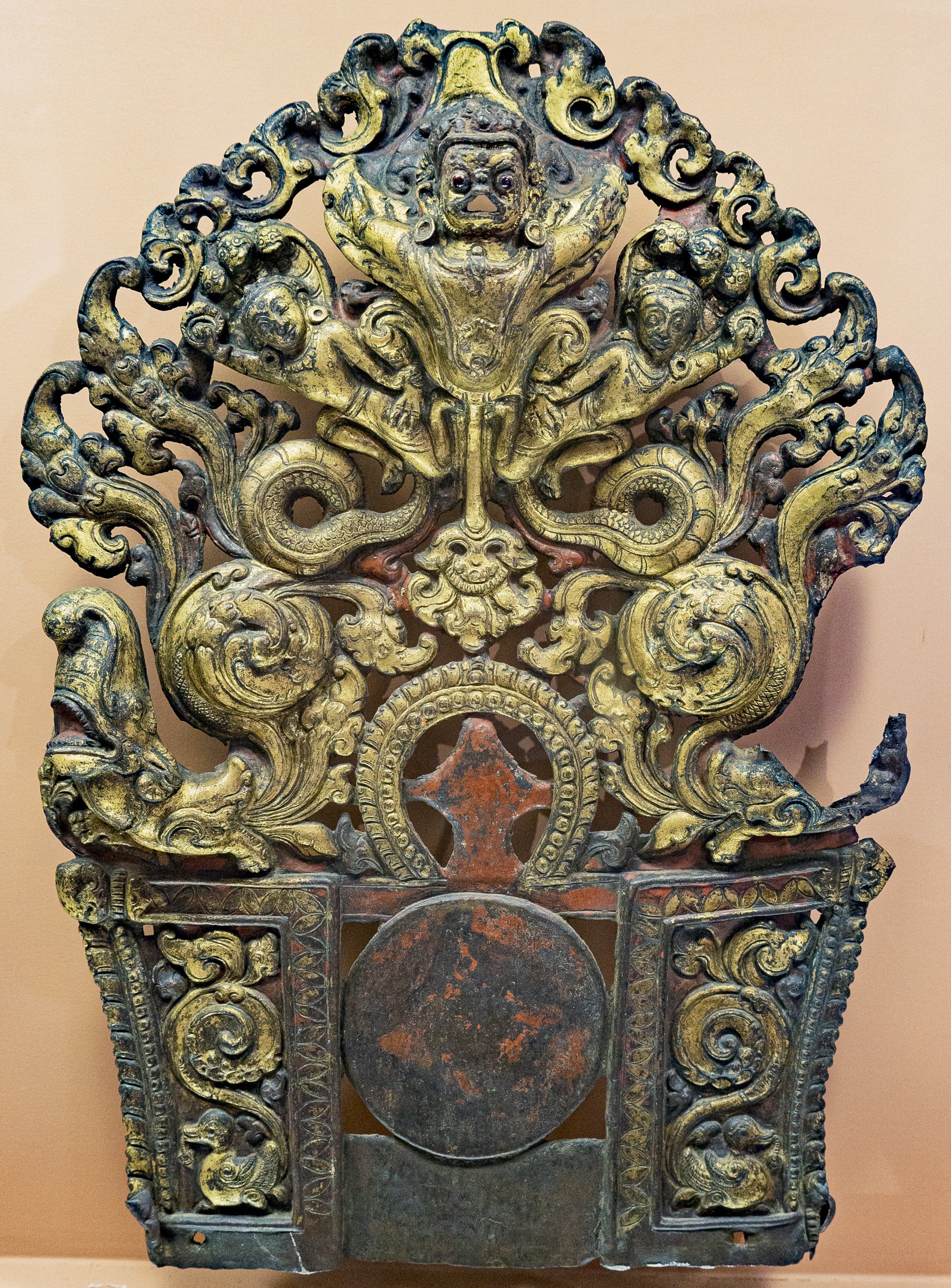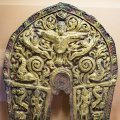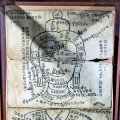Patan Museum (Nepal): photo 206
Photo 206 of 212 in Gallery: Patan Museum (Nepal)

Image title: Throne Back (Nepal, 16th century)
Description of the photo
This Copper sculpture shows the image of a Throne Back for a Seated Deity, from the 16th/17th century, originating from Nepal.—Materials used: Gilt copper repoussé, paint and jewels.
Description [from the previous image]: This object, and the adjoining one on the right, faithfully preserve a type of ornamental throne back seen in 11th century Nepalese manuscript illuminations and even earlier north Indian sculptures. In this example a deity once sat in front of the central empty space. Above is a halo and Garuda clutching anthropomorphized serpents. Mythical creatures (makaras) with elaborate tails occupy the horizontal members of the throne. Beneath are attendant deities beside which are flower-spewing “lion-griffons” (leogryphs) supported by elephants. With its exceptional high relief, elaborate cut-out work, this object is an excellent illustration of the high degree of skill achieved by Nepalese craftsmen in the demanding art of repoussé.
Gallery information:
The Patan Museum is located on the Durbar square of Patan (Lalitpur/Lalitapura, Kathmandu, Nepal) which is associated Keshav Narayan Chowk (Keshavnarayan)—a form of Lord Vishnu. Being listed as a World Heritage Site, the whole of Durbar square is filled with exquisite temples, sculptures and other ancient structures, of which the ancient history history can be traced to the Malla Kings of Lalitpur. It is an important site for both Buddhism and Hinduism.
Photo details:
Date: 2019-12-02
Camera: SONY ILCE-6400
Exposure: 1/20
Aperture: f/4.5
ISO: 200
Focal length: 18mm
High resolution:
Download file
Size: 6.12 MB
Resolution: 2610 x 3534
© Photograph by Gabe Hiemstra.
License: CC BY-NC-ND 4.0

